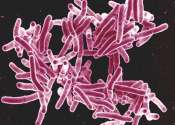New method opens the door to efficient genome writing in bacteria
Biological engineers at MIT have devised a new way to efficiently edit bacterial genomes and program memories into bacterial cells by rewriting their DNA. Using this approach, various forms of spatial and temporal information ...









